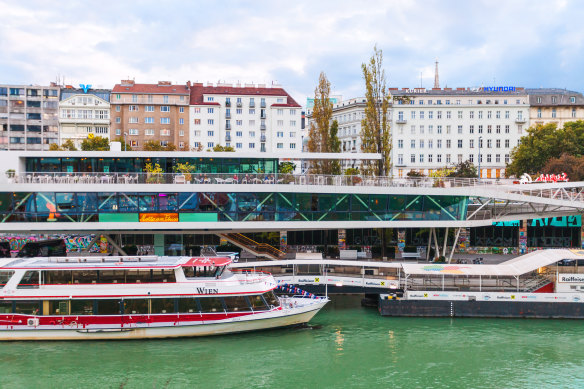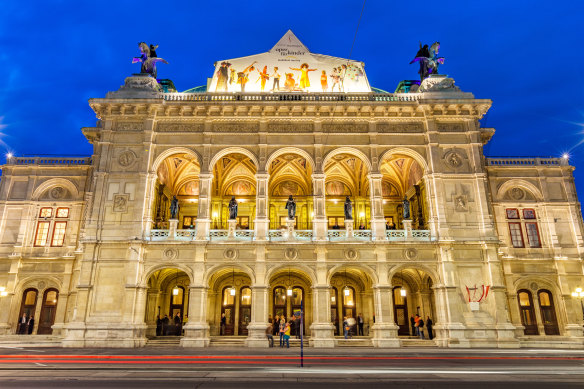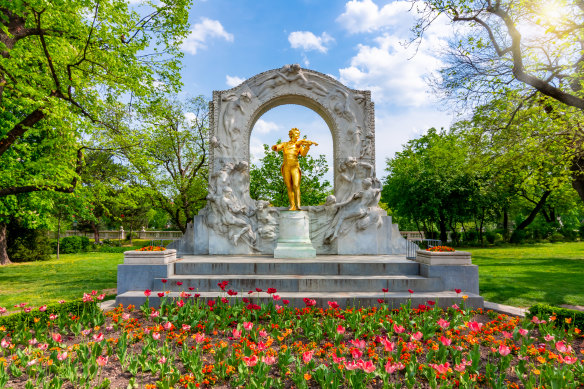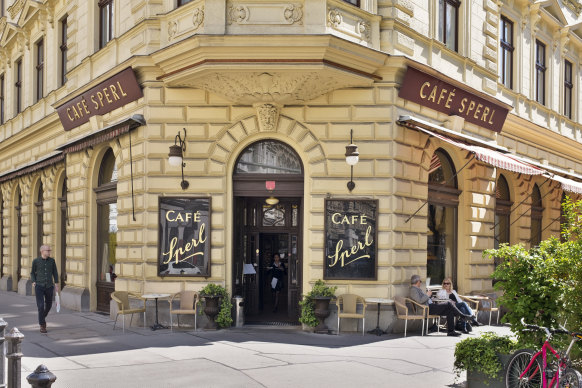Port guide: Vienna, Austria
This small, intimate capital bursts with high culture, musical history and grandiose architecture, yet is surprisingly laidback, charming and fun.
Who goes there
The Rhine and Upper Danube are the world’s most popular cruise rivers, and Vienna is a key stop – often overnight – on long cruises between Amsterdam and Budapest, or shorter cruises that concentrate on Bavaria and Austria. The season is almost year-round, so you can visit Vienna in December for its Christmas ambience and markets. Every river-cruise line visits, including APT, Avalon, Emerald, Scenic, Tauck, Uniworld and Viking.

Danube channel cruise port near Vienna’s Schwedenplatz square. Credit: Getty Images
Sail on in
The Danube here is neither as blue nor as beautiful as the famed Strauss waltz would have it, and skirts around the eastern edge of the city. The view is of modern office blocks and bridges on one side, and a long, skinny island on the other. You don’t need to stride the open deck: take a seat in the lounge over a morning cuppa. Never fear, as central Vienna’s beauty awaits.
Berth rites
Most river ships tie up on the quays around Reichsbrucke bridge, four kilometres from the city centre, from which it’s a short walk to a U-Bahn station. Some cruise lines provide a shuttle. A few ships dock at Schwedenplatz, which is more convenient since you can walk into the town centre, although it’s luck of the draw if you end up there.
Going ashore

Ornate exterior of the Vienna State Opera.Credit: Getty Images
Get walking, because downtown Vienna has fine boulevards, superb architecture, plenty of parks and statues at every corner. You’ll want to concentrate on District 1, the old-town core, surrounded by the Ringstrasse on which you’ll find the Hofburg Palace, State Opera and Museum of Art History, whose chamber of curiosities displays fabulous Hapsburg treasures. Across the road is the MuseumsQuartier with an entire collection of art galleries.
Don’t miss

Monument to composer Johann Strauss in Vienna’s Stadtpark.Credit: Getty Images/iStockphoto
You have various ways of exploring Vienna’s extraordinary musical legacy, starting with the homes of composers such as Beethoven, Mozart, Schubert and Haydn. Composers’ statues lurk among the flowerbeds of Stadtpark. Interactive museum Haus der Musik runs through composers’ lives and work and allows you to pick up a baton and conduct a virtual philharmonic orchestra. The State Opera and Vienna Boys Choir provide a terrific musical experience.
Get active
Vienna is more oriented to culture than sports, but the relatively compact city centre means main sights can be seen on foot. Donauinsel, the 21-kilometre-long island that has become one of Vienna’s main recreational venues – easily reached by Reichsbrucke bridge, it has jogging, cycling and skating trails, as well as a climbing park, huge trampoline centre and several beaches.
Best bites

Cafe Sperl maintains the feel of the late 1800s.Credit: Getty Images
Nothing says Vienna more than coffeehouses. Cafe Sperl has a late-19th-century ambience; light from chandeliers gleams on marble table tops. Bohemian Cafe Hawelka retains its 1930s look, down to rickety wooden floors and peeling theatre posters; you might feel you’ve strayed into the set of a black-and-white spy movie.
Cafe Central, once the hangout of Trotsky and Freud, is quintessentially Viennese. Cafe Drechsler opened in 1919 but now has a chic contemporary interior, and is the neighbour of Naschmarkt, Vienna’s tastebud-tingling open-air market.
Further afield
Shore excursions won’t take you beyond Vienna, but two destinations on its outskirts are popular. Schonbrunn, the baroque summer palace of Austrian emperors, is perhaps better for its park-like gardens than gilded interior. On the hills that edge northern Vienna, vineyards have been cultivated for 900 years and dozens of Heuringen or wine taverns provide wine, rustic fare and folk bands. Beethoven frequented Mayer am Pfarrplatz in the early 19th century.
Sign up for the Traveller Deals newsletter
Get exclusive travel deals delivered straight to your inbox. Sign up now.